Heading out the door? Read this article on the new Outside+ app available now on iOS devices for members! Download the app.
The Trek Madone is one of the most recognizable modern race bikes on the market today.
It came to market in 2003 with a name pulled from a French climb and was quickly synonymous with winning under Lance Armstrong. Those were the early days of carbon fiber and long before aero was everything.
Although the tubes used carbon, they were still mostly round and the Madone was Trek’s do-everything race bike. In 2016, everything changed.
Although the Madone had added aero details steadily since around 2012, weight had remained important. Then the Emonda came to market as a climber’s bike with weight as the ultimate goal. The new bike gave the Madone a new freedom. Aero was everything, weight didn’t matter, and the 2016 Trek Madone was completely different.
Today, eight years later, everything changes again. The Trek Madone is returning to its roots as an all-around race bike and the Emonda is disappearing.
Trek will tell you this is purely because of innovation but it’s largely a result of the UCI keeping the minimum bike weight (6.8kg/15 pounds) unchanged. More and more brands have managed to hit the minimum weight without sacrificing aero performance. The Emonda is no longer needed to offer what the Madone can’t — at least so long as the UCI minimum weight remains the same.
To understand what that means, my latest bike review is the updated Gen 8 Trek Madone I’ve been riding for close to a month now. I tested a top-spec Trek Madone SLR 9 AXS and what I found is that the Emonda disappearing is only a small footnote in the details of this bike. Nearly everything about the 2025 model year Trek Madone is new and the result is a bike unlike anything else.
As a final goodbye to the bike, I attempted to take it on a 230-mile trip to the beach and back. Things didn’t quite work out as planned, but my time with the Trek Madone was spent marveling at how smooth and comfortable it is. If you are looking for a new road bike this summer, keep reading to see what works and what doesn’t on the latest Madone.
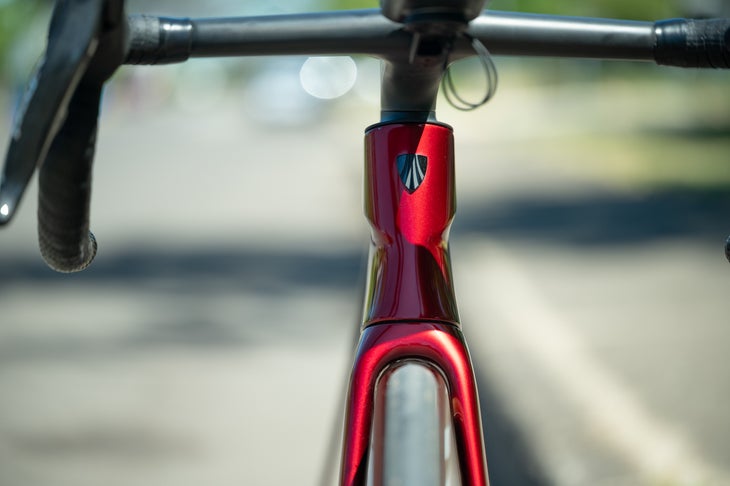
Quick hits: standout details of the Trek Madone SLR 9 AXS
- More aero than a Gen 7 Madone and nearly as light as the Emonda.
- For that reason the Emonda is leaving the Trek lineup.
- Comfort is the most noticeable part of the ride experience.
- There’s a high quality outfront mount.
- Power meter is included with SRAM builds.
- Aero cages will take standard bottles.
- Trek Project One allows you to get the exact bike you want.
- Sizing changes from numbers to T-shirt style of small, medium, etc.
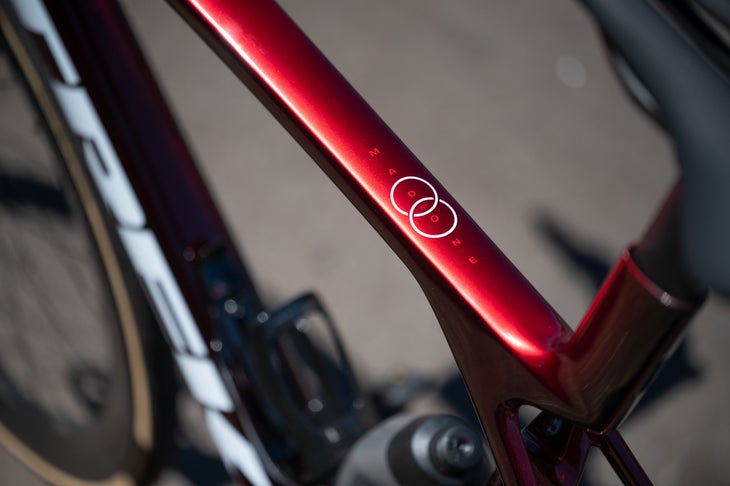
Trek Madone SLR 9 AXS frame details
The Gen 8 Trek Madone, is an attempt by Trek to turn back the clock. The Emonda came to market as a solution for a problem. Now there’s a better solution and Trek is recombining the Madone and the Emonda. The question is, can you do that without losing anything?
To answer that, Trek started by looking to add aerodynamics to the Emonda. Pretty quickly it was clear that a weight first focus wouldn’t cut it. You can add aerodynamics to a lightweight frame but it’s not as difficult as it once was to match the UCI minimum weight. A brand either has to blow past the UCI weight limit, ala the Specialized Aethos, or make an aero bike just light enough.
Having once again proven that, Trek started expanding the possibilities. Instead of a new Emonda, the goal was now to create a bike that was faster than both the Emonda and the Madone on any gradient between zero and 12 percent.
To get there, Trek developed a pair of algorithms that would both develop cross section shapes and test them. You can think of it as a brute force attack on aerodynamics and it allowed a speed of testing that would otherwise be impossible. This process led to a new shape called “Pareto” that’s more square than previously thought efficient. It minimizes weight while maximizing aerodynamics and it provides a range of options.
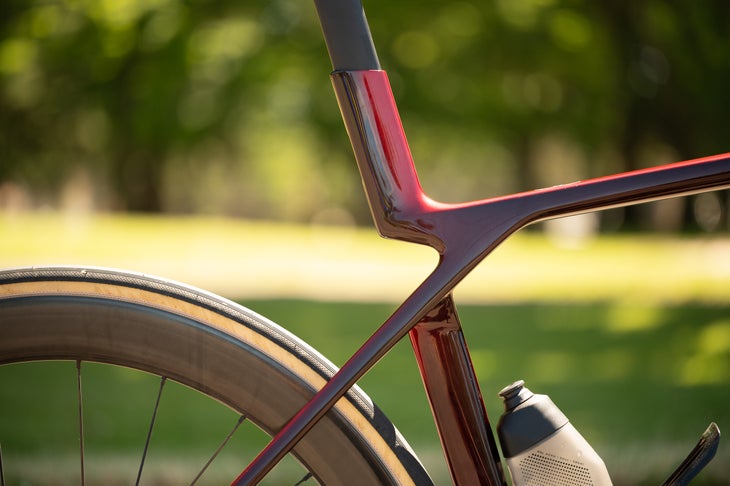
With that in mind, the next stage of development was to use those new building blocks to create a bike. Some of the shapes identified were lighter, some more aero, and the team used a combination of CFD and Finite Element Analysis (FEA) to find the best places for different shapes. Instead of simply trying to use the most aero option at every opportunity, Trek instead takes a system approach the brand is calling “Full System Foil.”
The idea here is that air flows at different speeds around different parts of the bike. Interactions at the front of the bike, or with the rider, sometimes slow it down and sometimes speed it up. Knowing this means different solutions are needed in different places. A chunky downtube that’s lighter and less aero makes sense because the front wheel slows the air. This slower air means low-drag shapes are less important for the downtube. At the same time, the legs of the rider actually speed up the airflow as it passes through. For that reason the area where you’d normally find a seat tube and post benefits from aero shapes and Trek uses the isoFlow design with aero shapes for the seat mast and post.
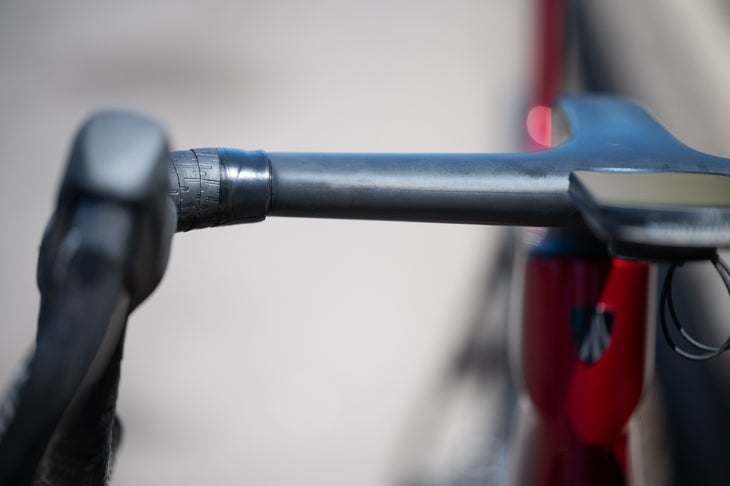
The last example Trek gives is the new Aero RSL Road integrated bar/stem. This is another piece that’s actually slower if you look at it in isolation. That increased drag is intentional though. According to Trek, the “wake of the thicker handlebar slightly reduces drag on the pedaling legs by slowing down the air in front of them.” Given that a rider’s legs are a bigger drag contributor, the net effect is a gain.
Overall, those little details are the point. Each little aero detail adds up and Trek quotes a 0.1 watt saving at 22 mph for the Madone Gen 8 vs Gen 7. If that sounds small, it is — but a win is a win and the numbers compared to the old Madone aren’t that important anyway. The place where you see bigger numbers is when compared to the Emonda. That comparison shows an 11.3 watt advantage at 22 mph while also dropping the weight to a 36 gram penalty for the vastly more aero bike. If you are curious, there’s also a savings of 322 grams for the frame and fork when compared to the Gen 7 Madone.
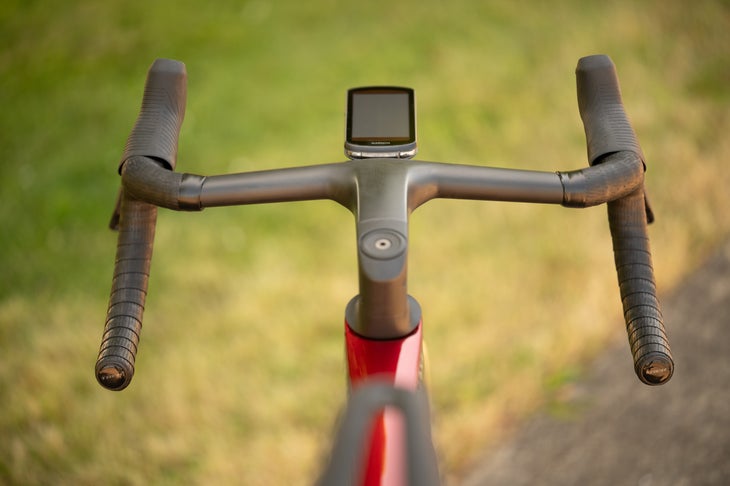
Trek Madone SLR Geometry
Although the various geometry options disappeared before this generation, that continues. There’s no longer a reference to various names and it’s the same as the previous h1.5. There’s also less sizes covering more range with a move from eight options, labeled using the seat tube length, down to six options labeled XS-XL. As you move up and down those sizes, Trek is offering size-specific tube shapes to go with them. Smaller and larger bikes will now have better balanced stiffness, better aesthetics, and actual wind tunnel testing.
| SIZE (all measurements in mm unless indicated) | XS | S | M | ML | L | XL |
| Seat tube | 40.4 | 44 | 47.6 | 51.2 | 54.8 | 60.9 |
| Seat tube angle (degrees) | 73.8 | 73.8 | 73.6 | 73.4 | 73.4 | 73.4 |
| Head tube length | 10 | 12.1 | 13.6 | 15 | 17.2 | 20.1 |
| Head angle (degrees) | 71.6 | 72.2 | 72.9 | 73.5 | 73.8 | 73.9 |
| Effective top tube | 51.7 | 53.2 | 54.5 | 55.7 | 56.8 | 58.4 |
| Bottom bracket drop | 7.2 | 7.2 | 7 | 7 | 6.8 | 6.8 |
| Chainstay length | 41 | 41 | 41 | 41 | 41.1 | 41.2 |
| Offset | 5 | 4.5 | 4.5 | 4 | 4 | 4 |
| Trail | 6.1 | 6.2 | 5.8 | 5.9 | 5.7 | 5.7 |
| Wheelbase | 97.1 | 97.6 | 98.1 | 98 | 99 | 100.7 |
| Standover | 70.9 | 74 | 76.8 | 79.4 | 82.5 | 86.9 |
| Frame reach | 37 | 37.8 | 38.4 | 38.9 | 39.4 | 40.2 |
| Frame stack | 50.7 | 53 | 54.6 | 56.2 | 58.2 | 61 |
| Saddle rail height min (w/short mast) | 54.9 | 58.5 | 62.1 | 65.7 | 69.3 | 75.4 |
| Saddle rail height max (w/tall mast) | 65.4 | 69 | 72.6 | 76.2 | 79.8 | 85.9 |
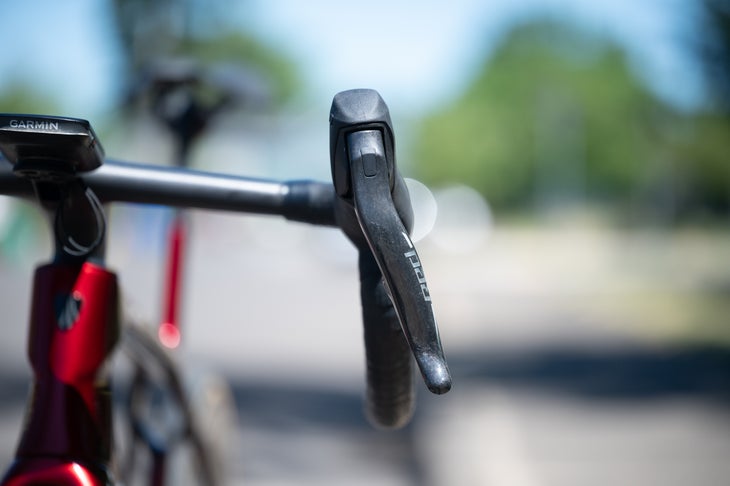
Builds and pricing
| Model | Groupset | Wheelset | Bars | Price |
| Madone SLR 9 AXS | SRAM RED AXS with power meter |
Bontrager Aeolus Pro 51, OCLV Carbon, Tubeless Ready | Trek Aero RSL Road integrated bar/stem | 13.999€ / $13,499.99 |
| Madone SLR 9 | Shimano Dura-Ace R9250 Di2 | Bontrager Aeolus Pro 51, OCLV Carbon, Tubeless Ready | Trek Aero RSL Road integrated bar/stem | 13.499€ / $12,999.99 |
| Madone SLR 7 AXS | SRAM Force AXS with power meter |
Bontrager Aeolus Pro 51, OCLV Carbon, Tubeless Ready | Trek Aero RSL Road integrated bar/stem | 9.499€ / $9,499.99 |
| Madone SLR 7 | Shimano Ultegra R8150 Di2 | Bontrager Aeolus Pro 51, OCLV Carbon, Tubeless Ready | Trek Aero RSL Road integrated bar/stem | 8.999€ / $8,999.99 |
| Madone SLR Disc F/S | 5.129€ / $5,999.99 |
Frame: 900 Series OCLV Carbon, Full System Foil tube shaping, IsoFlow seat tube, RCS Headset System, electronic-only routing, removable aero chainkeeper, T47 BB, flat mount disc, UDH, 142x12mm thru axle
Fork: Madone Gen 8 full carbon, tapered carbon steerer, internal brake routing, flat mount disc, 12x100mm chamfered thru axle
Shared with every build option: T47 bottom bracket standard, RSL Aero Bottle and Cage system, UDH (universal derailleur hanger), 32 mm max tyre clearance
| Model | Groupset | Wheelset | Bars | Price |
| Madone SL 7 | Shimano Ultegra R8170 Di2 | Bontrager Aeolus Pro 51, OCLV Carbon, Tubeless Ready | Bontrager Comp, alloy/Trek RCS Pro stem | 8.999€ / $8,999.99 |
| Madone SL 6 AXS | SRAM Rival eTap AXS with power meter | Bontrager Aeolus Elite 35, OCLV Carbon, Tubeless Ready, 35mm rim depth | Bontrager Comp, alloy/Trek RCS Pro stem | 5.639€ / $5,999.99 |
| Madone SL 6 | Shimano 105 R7170 Di2 | Bontrager Aeolus Elite 35, OCLV Carbon, Tubeless Ready, 35mm rim depth | Bontrager Comp, alloy/Trek RCS Pro stem | 5.129€ / $5,499.99 |
| Madone SL 5 | Shimano 105 R7120 | Bontrager Aeolus Elite 35, OCLV Carbon, Tubeless Ready, 35mm rim depth | Bontrager Comp, alloy/Trek RCS Pro stem | 3.589€ / $3,499.99 |
| Madone SL Disc F/S | 4.330€ / $3,799 |
Frame: 500 Series OCLV Carbon, Full System Foil tube shaping, IsoFlow seat tube, RCS Headset System, electronic or mechanical routing, removable aero chainkeeper, T47 BB, flat mount disc, UDH, 142x12mm thru axle
Fork: Madone Gen 8 full carbon, tapered carbon steerer, internal brake routing, flat mount disc, 12x100mm chamfered thru axle
Shared with every build option: T47 bottom bracket standard, UDH (universal derailleur hanger), 32 mm max tyre clearance
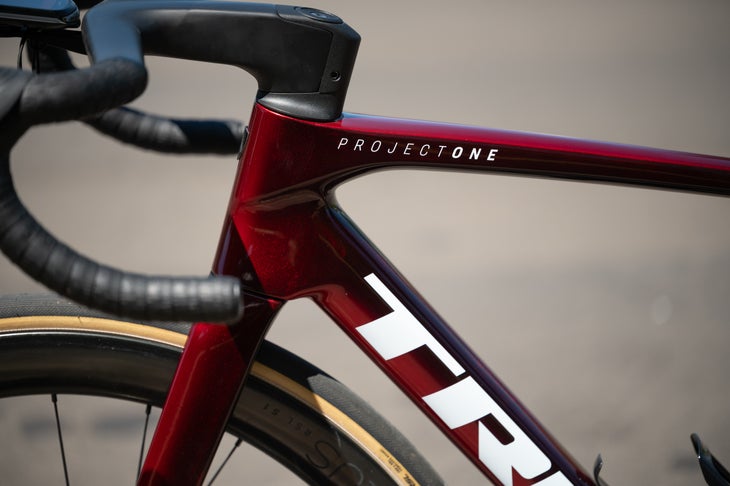
Trek Madone build details
One of the innovations that comes to the Gen 8 Trek Madone is the new full carbon one-piece fork. The same fork comes on every model of the bike but there’s also an updated 900 series OCLV carbon only available for the SLR builds. Along with the new carbon, the SLR builds also bring the addition of the one-piece bar and stem, electronic only groupset compatibility, and the aero bottle system. If you do decide to start with an SL build, the bar/stem and the aero bottle system are available as aftermarket accessories.
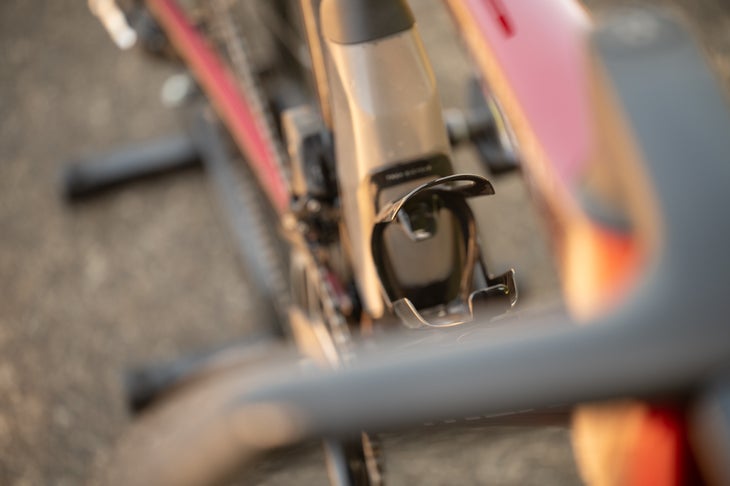
Among the build options you will also find customization options. If you prefer a frameset only, there’s one available in both carbon options. If you’d rather have a complete build but you want to customize the details, check out Project One. If you, like me, prefer better climbing gears and a 1:1 ratio, you could change the gearing that comes with your bike as well as any other sizing details. You can also adjust components up or down and there’s plenty of paint options. Depending on budget you can stick to picking a simple color scheme for no up-charge or take a look at the Project One ICON series premium paint schemes. Launching with the bike is a new option in that lineup called Chroma Interstellar.
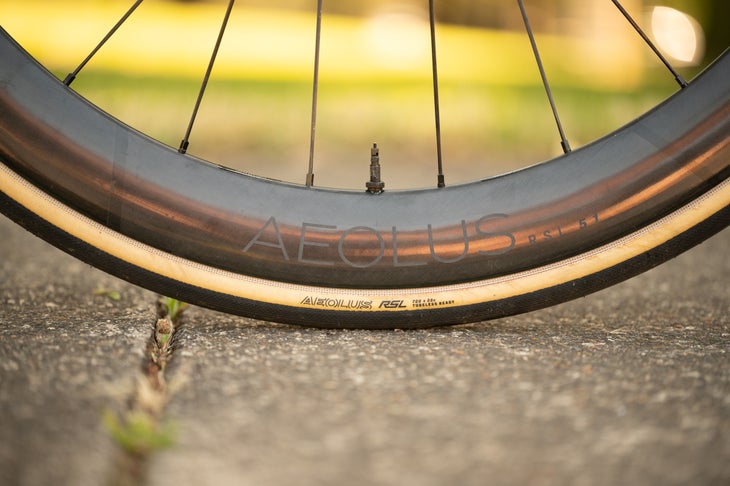
Ride experience
Sometimes testing doesn’t go according to plan. My plan with this bike was to cap off more than a month of riding with it by doing a roughly 230-mile ride from my house to the coast and back. I’d written headlines talking about spending 15-hours (just a guess) on it and I’d prepared the bike. After 10 miles, my riding partner and I collided, the bike went down, and the UDH broke. The ride was over. I could hide that but I think there’s value in what it says about the Trek Madone Gen 8 even if it didn’t go off as planned.
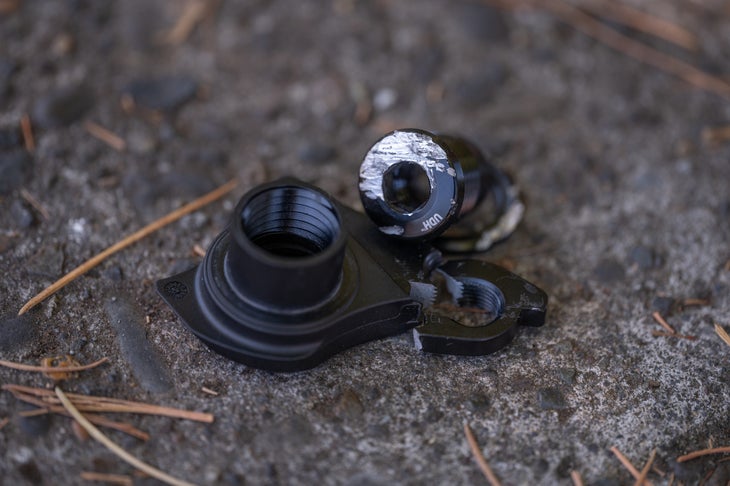
The idea of the trip came to me because of how this bike felt. From the very first moment I swung my leg over it, I was immediately blown away by how smooth it is. The terrible pavement as I leave my neighborhood is nearly imperceptible on the Madone. As I went over a rough wooden bridge on a later ride I realized that it was actually a moment I could attack as my buddy slowed. At one point I even started to wonder how well it would do off-road on its max 32 mm tires.
I initially worried that it was smooth because it had a lot of flex but as soon as you stand, you know that’s not the case. My notes from those early rides are all questions trying to get to the bottom of when it feels stiff vs compliant. The more I tested, the more amazed I was with the dual nature of the latest Madone.
If you cruise with it, it’s smooth and comfortable. If you push it, the bike responds. Stand to sprint and it feels like a different bike. When it’s time to climb, the 6.9kg (as measured ready to ride minus pedals) and stiff frame are willing partners. This dual nature is backed up with a comfortable riding position as well.
Like with the Enve Melee, holding the tops puts you somewhat upright. Trek counters the upright position with the Trek Aero RSL Road integrated bar/stem that uses a proven trick of simply being narrow. Size it like other bars on the market and you’ll notice narrower hoods that provide a big aero upgrade. I tend to find this unnoticeable and, given it’s faster, that’s a good thing. The only detail I would love to see addressed is the narrow, rounded, nature of the bar immediately behind the controls. If this was my bike, I’d want to add a bit more padding right there.
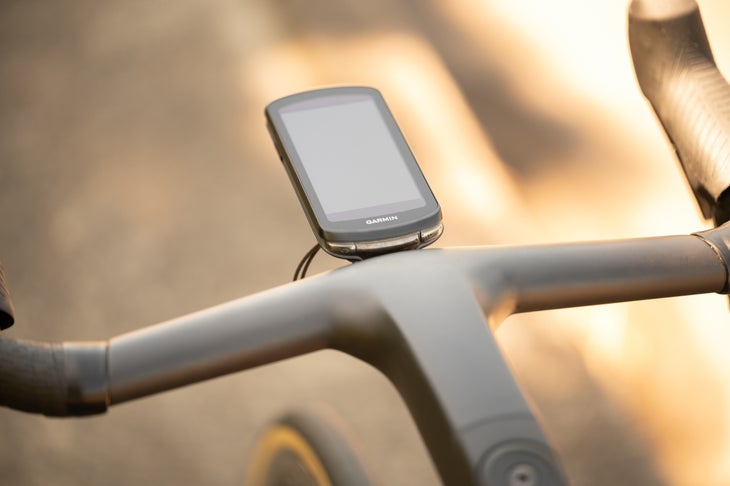
As far as the rest of the finishing kit goes, there’s not a single detail I can complain about. Bontrager Aeolus Pro 51 TLR Disc Road Wheel shrugged off crosswinds and felt fast. The Aero bottles are very usable plus offer an easy 3ish watts savings depending on speed (3.7 watts at 45 km/h) and I love the outfront mount. That’s something I often complain about because it can be such an annoyance when it’s not right, but this time Trek nailed it. Even the included saddle is great and actually a piece I’ve used on other bikes a number of times over the years. If any of those details, including specifics like gearing, aren’t quite right for you, then Project One will fix it without issue.
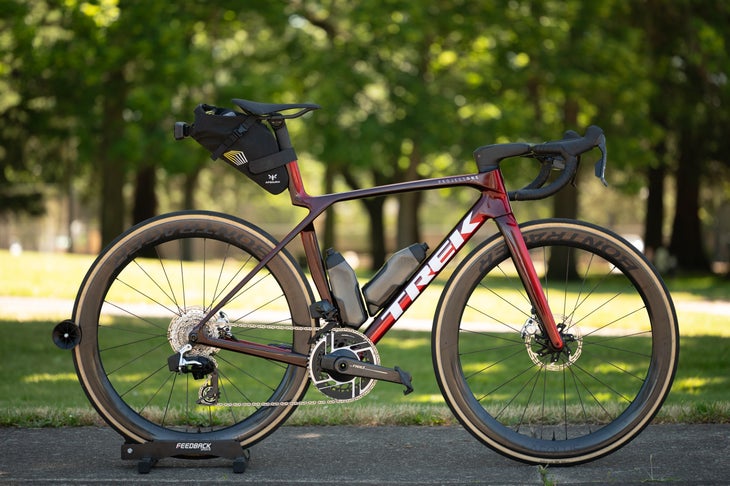
Conclusion
The Gen 8 Trek Madone is the kind of bike I want to share with you. When I packed it up to head to the beach, I swapped out the aero bottles for a set of HydraPak Breakaway+ 30oz bottles (with the filter swapped for standard tops) and it just worked without issue. Then I added the light mount and attached an Outbound Lighting Detour. Again, everything just worked.
That idea of things just working is what I look for in a bike. Trek wants to talk about smashing an aero bike and a climbing bike together but that’s only part of the story. The Madone is so comfortable, smooth, and usable that Trek is really offering one bike to cover all of your needs. If you want to do some kind of huge ride, that’s a five-minute swap from fast bike to long distance bike. If you want to take a bike out climbing grab this one. If you have a fast and flat day, the Madone works there too.
However you decide to use it, Trek thought through all the little details. Creating a good quality outfront mount is a small thing that has a big impact on your experience of riding a bike, Trek nailed that for you. There’s aero bottles but they are good for drinking water and you can also use standard bottles if you need to. You can go fast or slow over rough or smooth pavement and the Gen 8 Trek Madone is a capable partner. If there’s anything you want changed, Trek makes it easy to customize your build. Even the builds with included power meter are part of the picture. Nothing ever feels cheap and, sadly, that’s not always true even on a bike this expensive.
The only thing that kept sticking in my mind during this test was whether I wanted a bike this smooth all the time. The first time I took it out I’d just gotten off my Look 795 Blade RS while testing the Specialized Roval Rapide CLX II wheels. The Trek is just as fast, I actually matched my fastest time, but it doesn’t feel as fast. The Look is a visceral ride with controls that are two inches lower. It’s not smooth, it requires a good stretch before and after a ride, and the combination of those wheels and the Hope RX4+ brakes make for a lot of noises. When you ride that bike, you feel like you are pulling the performance out of it. The Trek Madone is just as fast but it lacks all the drama. Is that a good thing?
Would you prefer a bike that’s borderline uncomfortable but very engaging or a bike that’s precise and smooth but feels a little less heroic? If you want a go fast bike that can do anything you ask, no drama included, check out the latest Trek Madone.
Gallery
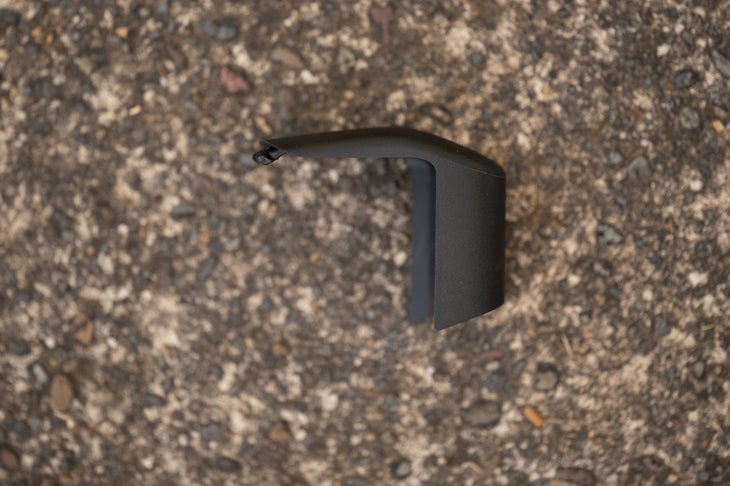
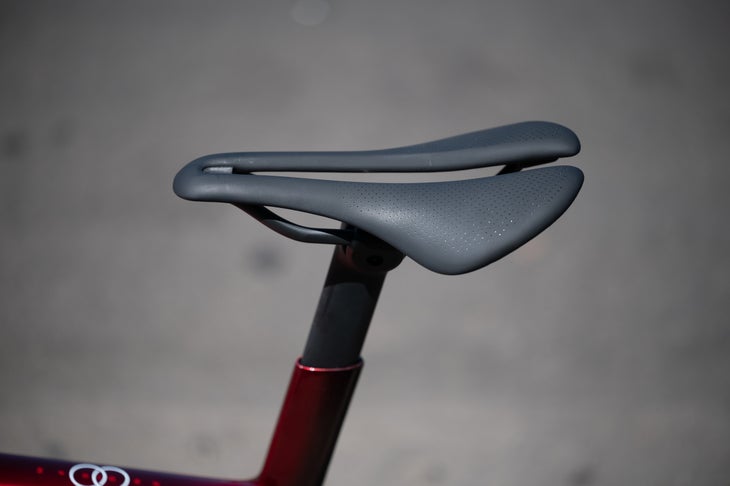
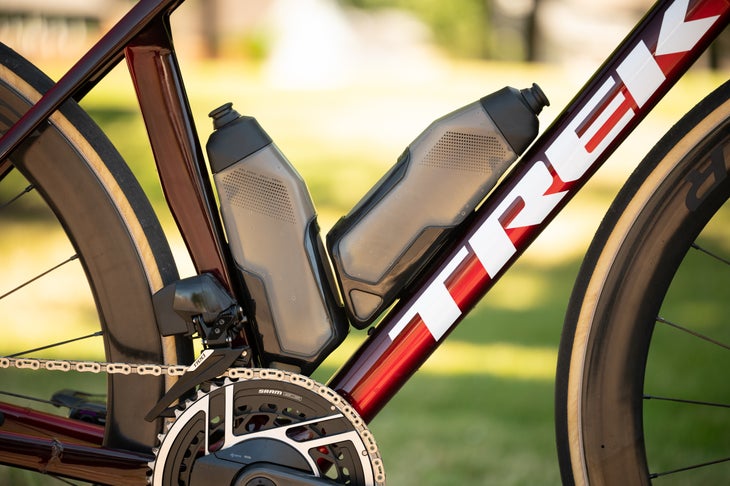
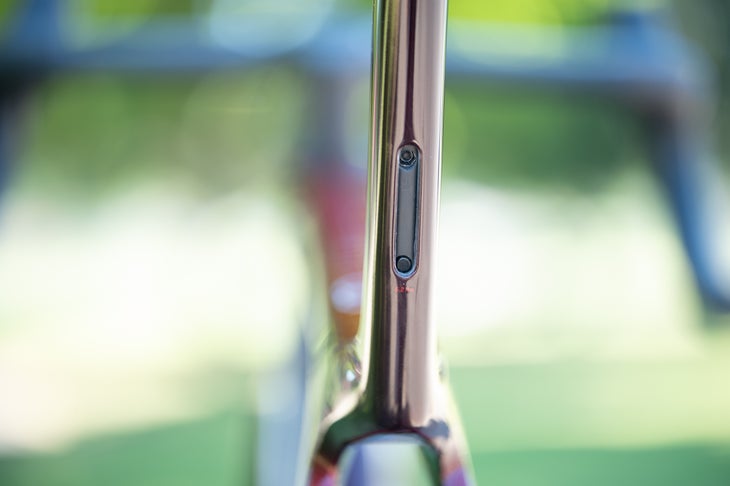
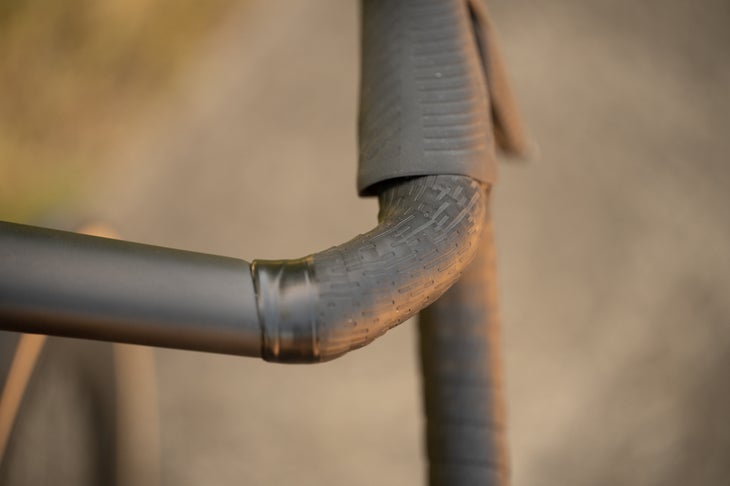
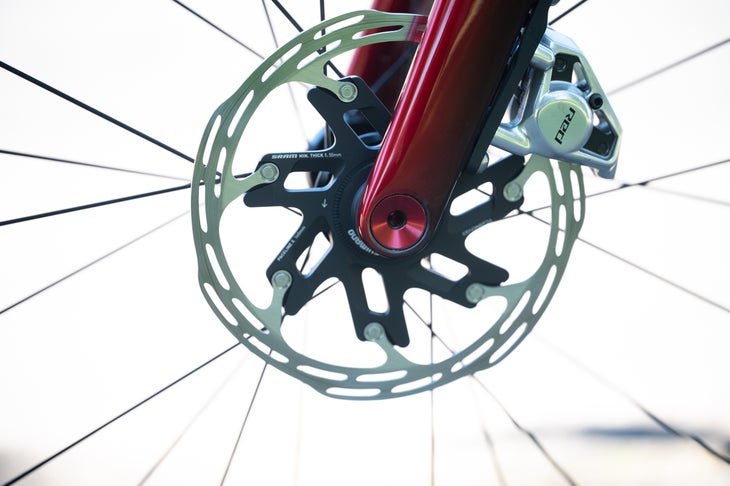
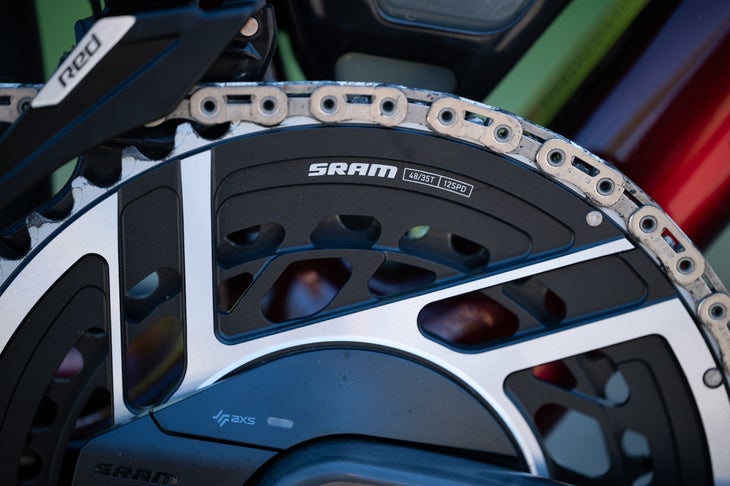
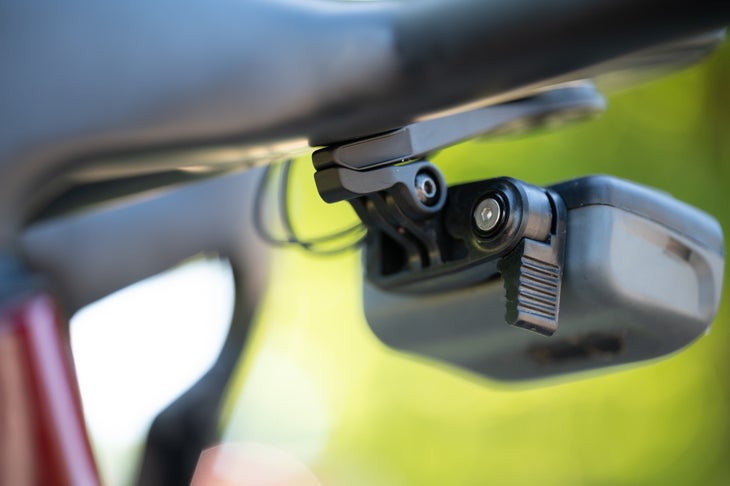
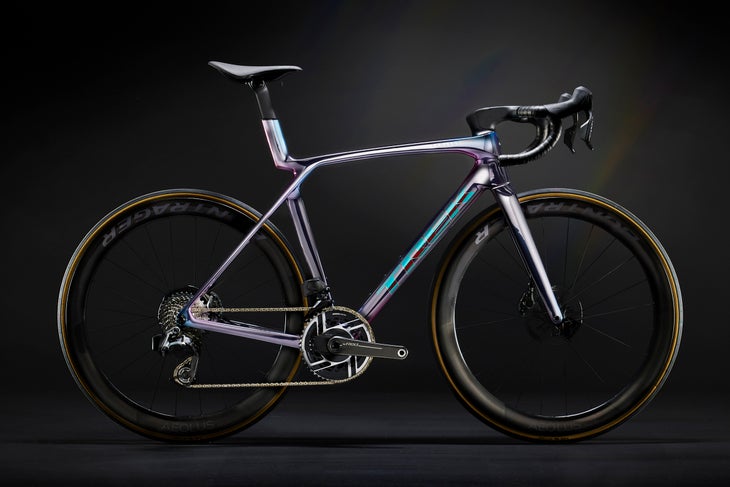
Review: The New Trek Madone Is Extra Smooth and Still Very Fast - Outside Magazine
Read More
No comments:
Post a Comment